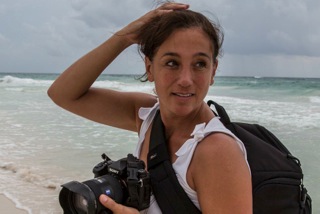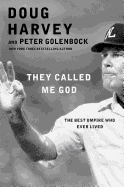 Cristina Mittermeier believes that the range of her experiences--growing up in Mexico, working as a marine biologist and biochemical engineer, raising children, writing, traveling the world, a career in conservation--all serve to enrich her photography. She says her path to the craft was "a happy accident" that has allowed her better to communicate all her "concerns, passions and hope for a better planet."
Cristina Mittermeier believes that the range of her experiences--growing up in Mexico, working as a marine biologist and biochemical engineer, raising children, writing, traveling the world, a career in conservation--all serve to enrich her photography. She says her path to the craft was "a happy accident" that has allowed her better to communicate all her "concerns, passions and hope for a better planet."
In Sublime Nature: Photographs That Awe and Inspire (see our review below), Mittermeier has collected photographs from around the world, images captured by a diverse selection of renowned nature and wildlife photographers. As founder and former president of the International League of Conservation Photographers and one of Sony's Artisans of Imagery (2008), she believes that photography can cross barriers, cultures and languages. She ardently advocates for its use as a means to encourage others to protect and preserve the beauty and natural resources of our planet.
You've spent the past 20 years focused on earthly conservation. Where does that passion come from?
I suppose it is self-preservation. Our planet's natural resources are the foundation of our livelihoods and conserving them is the only way to ensure a continued quality of life for all. Setting aside areas for protection and building boundaries that protect species and landscapes is the best tool we have. Photography informs and encourages both.
 What inspired the four themes/sections of Sublime Nature: Awe, Grace, Joy, Peace?
What inspired the four themes/sections of Sublime Nature: Awe, Grace, Joy, Peace?
For me, there is nothing more sublime than nature. The themes of the book evolved as I read the writings of the great philosopher Immanuel Kant, who, in 1764, made an attempt to record his thoughts on the mental state of an observer of nature in Observations on the Feeling of the Beautiful and Sublime. He held that the sublime was of three kinds: the noble, the splendid and the terrifying. These aspects gave base to the themes as the National Geographic team and I collaborated. We selected four great emotions of the human spirit as elicited by nature: hope, awe, joy and peace. We assigned a color to each emotion and then we set out to find images that fell into our themes and our color scheme in order to create a visual journey.
How did you choose which photographs to showcase in the book? What do you feel constitutes a truly great photograph?
When I look at an image, I always pose a question to myself: What happens to the character in the picture, be it a person or a bear, when nature and humanity collide? I want images to leave a door open for the viewer to articulate an answer. In the search for images for Sublime Nature, I further wondered: If I could visit that world (the image in a photograph) and be held there in its arms, could this image help me invite others inside, so that maybe they, too, could be held there? I wanted the photographs included in this book to beckon and inspire others the same way they have affected me.
In conservation photography, a great image is one that can tell a story. I am interested in images that better capture the full, complex reality of human beings and our surrounding universe.
In the end, the best images are a marriage of beautiful art, conservation substance and science. They often become iconic, and they always become a part of our collective psyche informing society about our natural world. The best images are a two-way street between me, the viewer and the rest of the world.
 |
|
A late afternoon bath turns into a joyful water fight in the waters of the Iriri River, Brazil. (photo: Cristina Mittermeier)
|
Have innovations in photography changed your craft?
Innovations (like better sensors, faster frame rates, smarter cameras) can only help photographers become more effective. But the hard work of understanding our universe and aiming our cameras at subjects that really matter will not change with technology.
Which is your photographic medium of choice--digital or film?
I love digital. I did my time on film, and I cannot think of a single reason to ever shoot it again. It is the photographer, not the camera, not the film, that makes the picture.
How do you think images such as those in Sublime Nature can save the environment, animals and landscapes?
I hope that, at the end of my career, people know I made and presented images that mattered. Photographs, especially when they are iconic, make us pause, reflect and internalize information in a way like no other medium. Images require no translation, and photography has the power to inform, encourage and inspire the protection of our planet's natural and cultural treasures. --Kathleen Gerard, blogger at Reading Between the Lines
Cristina Mittermeier: Images That Matter




 Cristina Mittermeier
Cristina Mittermeier What inspired the four themes/sections of Sublime Nature: Awe, Grace, Joy, Peace?
What inspired the four themes/sections of Sublime Nature: Awe, Grace, Joy, Peace?












